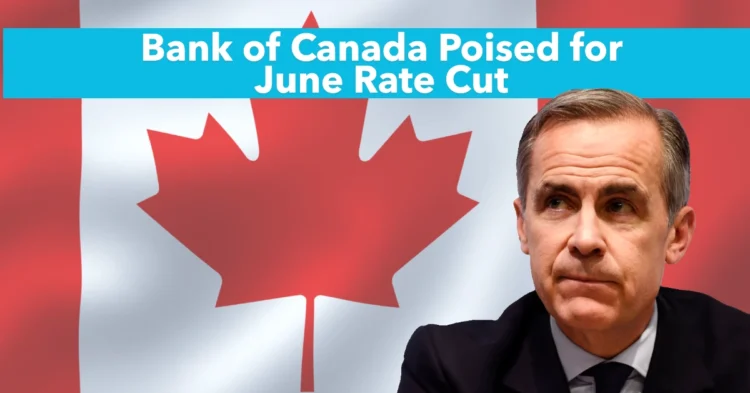Canada’s labor market just sent a strong signal to policymakers—and it’s one the Bank of Canada (BoC) is unlikely to ignore. With unemployment jumping to 6.9% in April 2025, the highest level outside the pandemic since 2017, many economists now believe a BoC interest rate cut in June is all but certain.
Table of Contents
Unemployment Hits 6.9% as Hiring Slows Across Key Sectors
According to Statistics Canada’s April Labour Force Survey, the Canadian economy added just 7,400 jobs, falling short of the 10,000 job growth expected. The unemployment rate rose 0.2 percentage points to 6.9%, largely due to a slowdown in private sector hiring and mounting job losses in manufacturing, resources, and wholesale trade.
Outside of temporary boosts in public administration hiring due to the federal election, most sectors experienced stagnation or outright declines. Manufacturing alone shed over 30,000 jobs, the largest loss outside of pandemic and financial crisis periods in the past 19 years.
US Tariffs and Domestic Uncertainty Straining the Labor Market
A growing consensus among economists is that U.S. tariffs on Canadian exports are beginning to take a toll. Many businesses are holding back on investments and staffing decisions amid the uncertainty. Economists warn that if not for the temporary hiring in April related to the federal election, total employment may have declined for a second straight month.
This erosion in the labor market comes at the same time as weaker GDP growth and a concerning slowdown in wage increases. Several experts describe this convergence of events as a clear recession warning.
What Mark Carney’s Victory Means for Future Bank of Interest Rate Cuts
Pressure Mounts on the Bank of Canada to Cut Interest Rates
The BoC has already lowered its policy rate to 2.75% from a peak of 5.00% in 2024. However, after pausing in April to assess inflation and growth trends, the central bank now faces renewed pressure to act again.
Economists from major institutions—including TD Bank, BMO, CIBC, and RBC—largely agree that the next move will be a 25-basis-point cut in June, with some even suggesting a 50-point reduction depending on May’s inflation data.
Stephen Brown, Capital Economics:
“Employment would have fallen again in April were it not for the boost from the federal election… We expect the Bank of Canada to resume its loosening cycle next month.”
Douglas Porter, BMO Economics:
“Labor market slack is building. This clearly increases the odds of a 25-basis-point rate cut in June.”
Tariff-Exposed Sectors Driving the Downturn
The damage is concentrated in sectors directly exposed to U.S. trade policy, including:
- Manufacturing (–31,000 jobs)
- Wholesale trade
- Natural resources
- Construction and hospitality
Ontario, with its heavy industrial base, was especially hard hit in April.
Will May Inflation Data Tip the Scales?
While the labor market data leans heavily toward a rate cut, the BoC remains closely tied to its 2% inflation target. Some economists caution that underlying inflation pressures—especially outside of food and energy—may give the Bank reason to hesitate.
However, most analysts say inflation alone won’t outweigh a deteriorating job market and the rising risk of a recession.
Tiago Figueiredo, Desjardins Capital Markets:
“The Bank of Canada should be concerned… It will likely resume easing in June with a 25- or 50-basis-point cut.”
What It Means for Canadians
If the BoC cuts its rate in June, it could mean:
- Lower interest rates on mortgages and lines of credit
- Improved borrowing conditions for small businesses
- Possible downward pressure on the Canadian dollar
- Mild boost to consumer spending and investment confidence
However, economists caution that rate cuts alone won’t reverse trade-related job losses or stabilize sectors hit hardest by tariffs.
Conclusion: All Eyes on June 5 BoC Meeting
The Canadian economy is clearly feeling the pressure—from both internal and external shocks. While the final decision will factor in upcoming inflation and GDP numbers, April’s labor market data has shifted the conversation decisively toward more monetary easing.
Unless there is a surprise rebound in key economic indicators, Canadians should expect the Bank of Canada to cut interest rates at its June policy meeting, marking a pivotal moment in its 2025 economic strategy.

